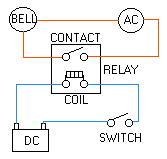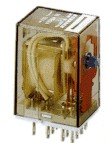The Working Principle and the Role of Time Relay
In order to know time relay principle, first we should know the definition, Here, we focus on time relay principle and the role of time relay.
Time relay working principle
Time relay is a kind of electrical components which used in the low voltage or current circuit, to connect or cut off a higher voltage or a higher current of the circuit. In the power supply circuit, the relay was also called the contactor.
According to the power supply requirements to drive the time relay work, it can be divided into AC relay and DC relay, respectively applied for the AC circuits and DV circuit. In addition, according to the degree of working voltage, there are 6, 9, 12, 24, and 36, 110, 220, 380, etc. different working voltage used in different control circuit. According to its contacts, there were often the difference of normally open, normally closed and transition. To distinguish from relay appearance, it can be differed as sealed, small, and miniature.
Stepping relay: automatic telephone switchboard used a lot of this kind of relay. Relay itself can automatically move contacts to the corresponding locations according to the input of the pulse control coil number, such as input six pulses, movable contacts will connect 6 set contacts, input nine pulses, it received to NO. 9 contact. The phone automatically transfers to needs lines on the dialing pulse digital;
Resonant relay: relay itself has multi different length, thickness reeds, each element itself has the different resonance frequency and reasonable distribution, when the input coil current of relay is the same as the resonance frequency of one of the reeds contacts, because of the resonance, the reeds produce large vibration, thus corresponding set contacts closed, input another frequency signal can make another contacts move.
We can think of a relay as an electromagnetic switch. Apply a voltage to the coil and a magnetic field is generated. This magnetic field sucks the contacts of the relay in, causing them to make a connection. These contacts can be considered to be a switch. They allow current to flow between 2 points thereby closing the circuit.
Let’s consider the following example. Here we simply turn on a bell (Lunch time!) whenever a switch is closed. We have 3 real-world parts. A switch, a relay and a bell. Whenever the switch closes we apply a current to a bell causing it to sound.
Notice in the picture that we have 2 separate circuits. The bottom(blue) indicates the DC part. The top (red) indicates the AC part.
Here we are using a DC relay to control an AC circuit. When the switch is open no current can flow through the coil of the relay. As soon as the switch is closed, however, current runs through the coil causing a magnetic field to build up. This magnetic field causes the contacts of the relay to close. Now AC current flows through the bell and we hear it.
The role of time relay
The role of time relay is as a simple execution device of the program control, when it accepts the start signal, after the timing is over, its working contacts open or close, so as to promote the follow-up circuit working. Generally speaking, the delay performance of time relay in design is adjustable, thus to adjust the length of time delay. Through the configuration of a certain number of time relay and middle relay, we can do it.


